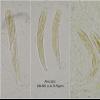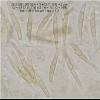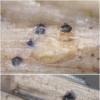
08-06-2020 12:38
Garcia SusanaHola, He encontrado unos pseudoteciós sobre un t

14-11-2020 19:37
Dirk BaertHallo allen,Deze Trichoderma spec. gevonden.Iemand

15-11-2020 21:48
Mirek GrycHello allFound today on a branch of an unknown spe

16-11-2020 21:41
 Hans-Otto Baral
Hans-Otto Baral
Dear colleagues,you all may remember the call for

15-11-2020 17:08
Juuso ÄikäsI found these accidentally while looking at other

15-11-2020 08:58
 Bernard CLESSE
Bernard CLESSE
Non loin de la mer, dans une panne dunaire, en pel

13-11-2020 14:14
William de JongHi, I'm quite new in working with a microscope. C

15-11-2020 16:10
 Riet van Oosten
Riet van Oosten
Hello, Found by Laurens van der Linde, november 2

15-11-2020 17:22
 Stephen Martin Mifsud
Stephen Martin Mifsud
Trying to identify a white mould growing on the su

14-11-2020 02:33
Manak RomanHi all,I found Peziza in moss in meadow on calcare
Paraleptosphaeria nitschkei?
Garcia Susana,
08-06-2020 12:38
Hola,
He encontrado unos pseudoteciós sobre un tallo herbaceo (umbelifera). Son globosos (unos 240um de diametro), inmersos bajo la epidermis.
He pensado que podía ser algún leptosphaeria y he encontrado una entrada antigua de E. Rubio con una especie similar a la mía y que podría ser Paraleptosphaeria nitschkei.
¿Creeis que puede ser esta la especie?
Saludos
Susana
Mlcoch Patrik,
16-11-2020 23:23

Re : Paraleptosphaeria nitschkei?
Yes, typical P. nitschkei.
Garcia Susana,
17-11-2020 07:52
Re : Paraleptosphaeria nitschkei?
Gracias por la confirmación, Patrik
Un saludo
Susana


